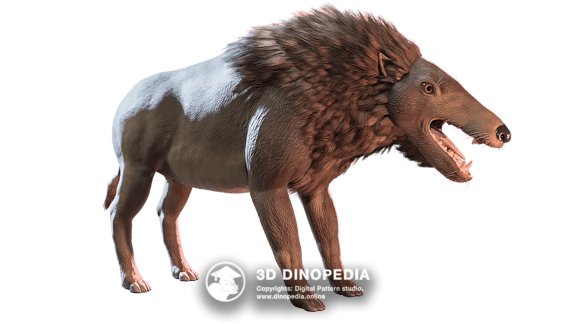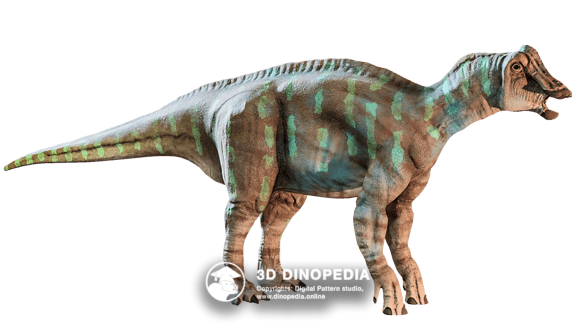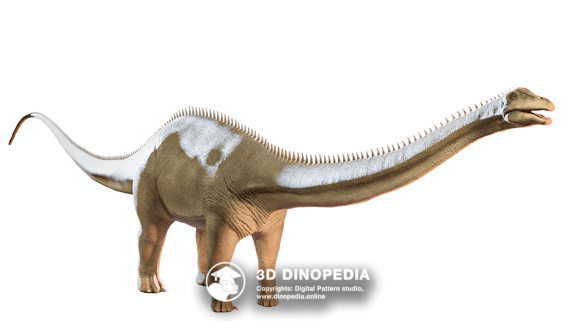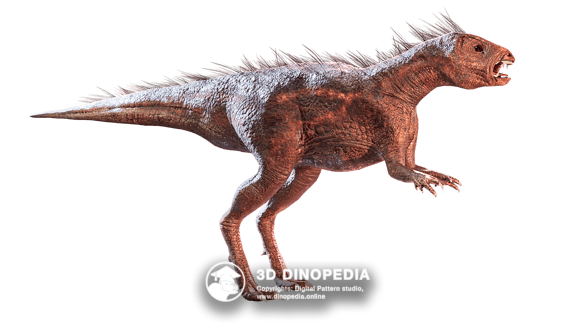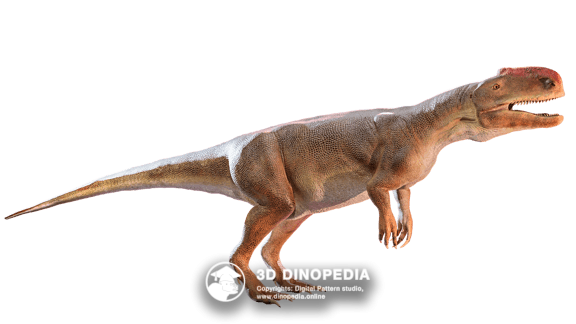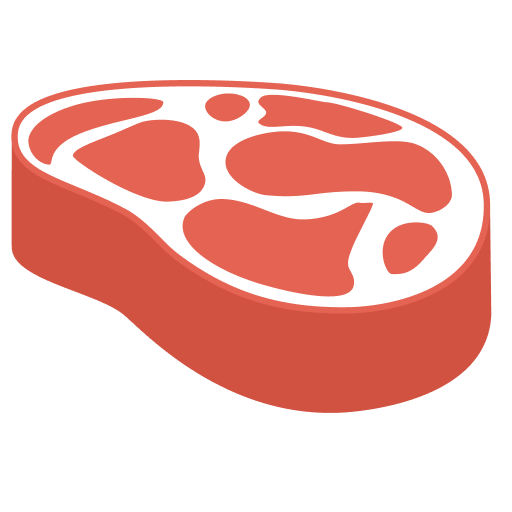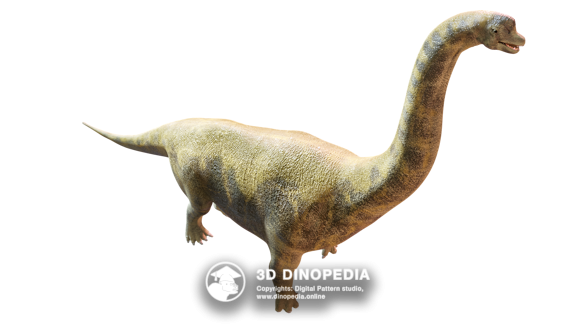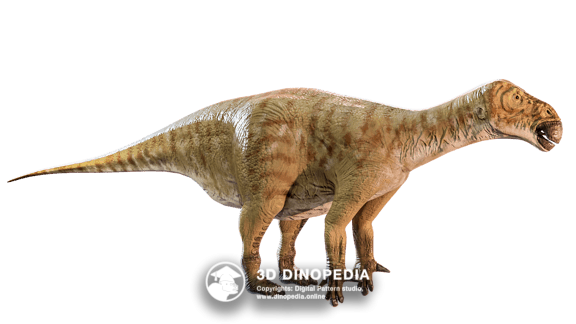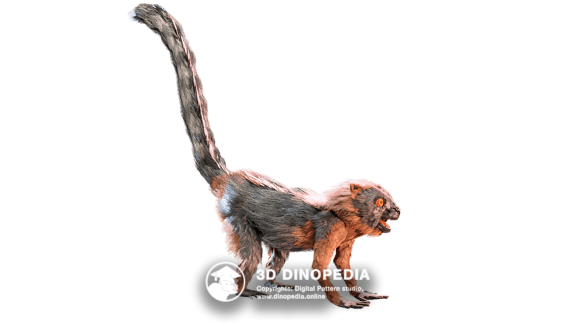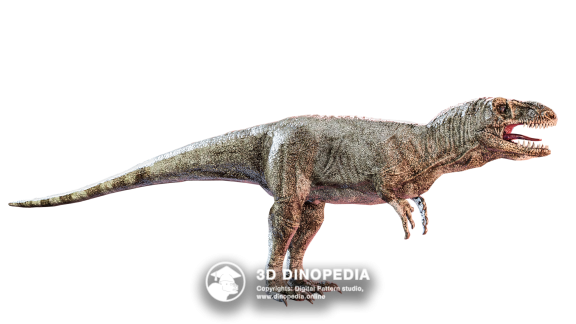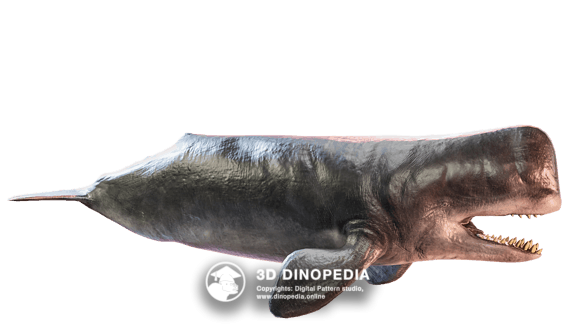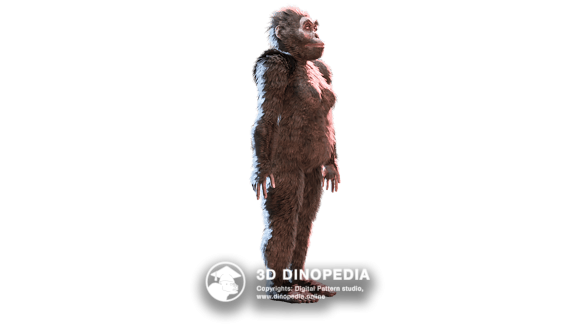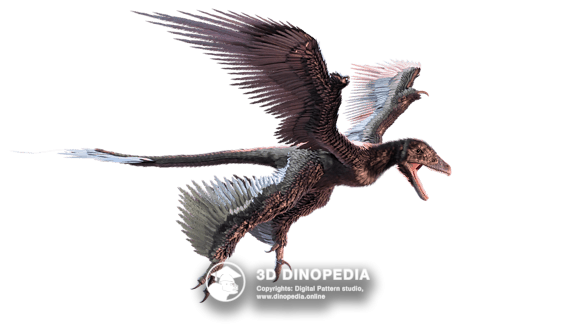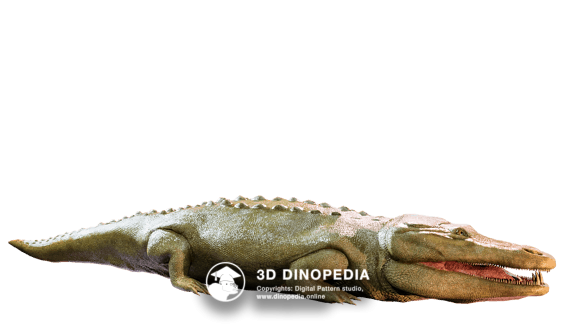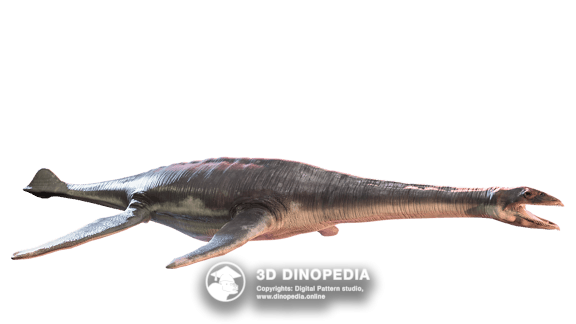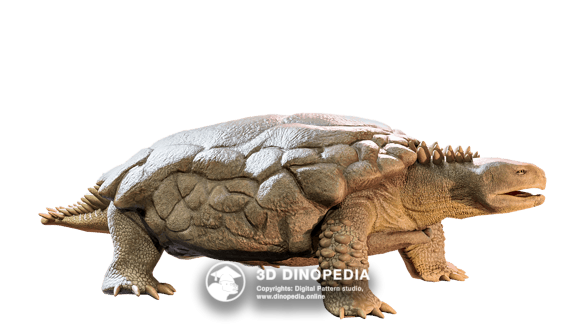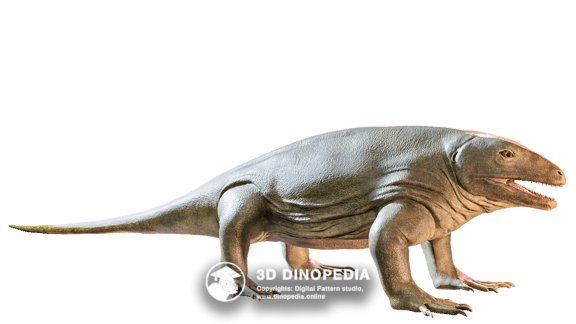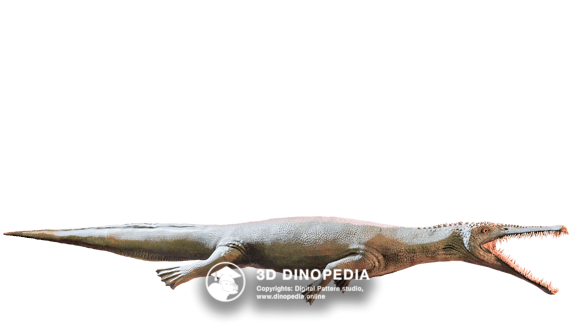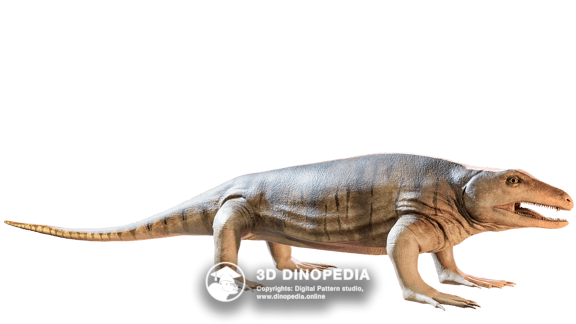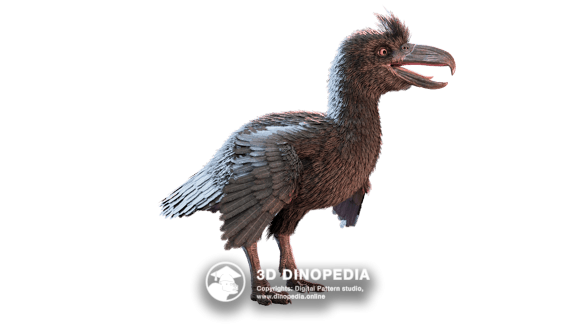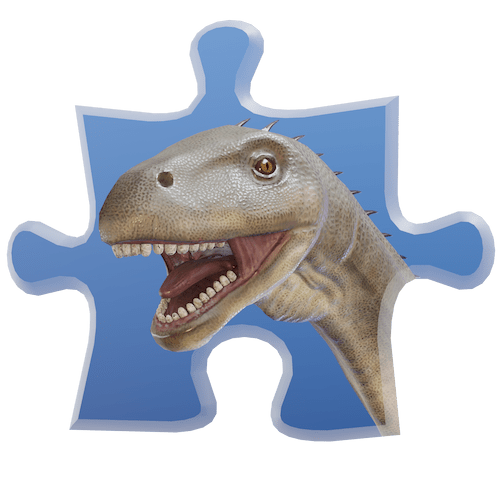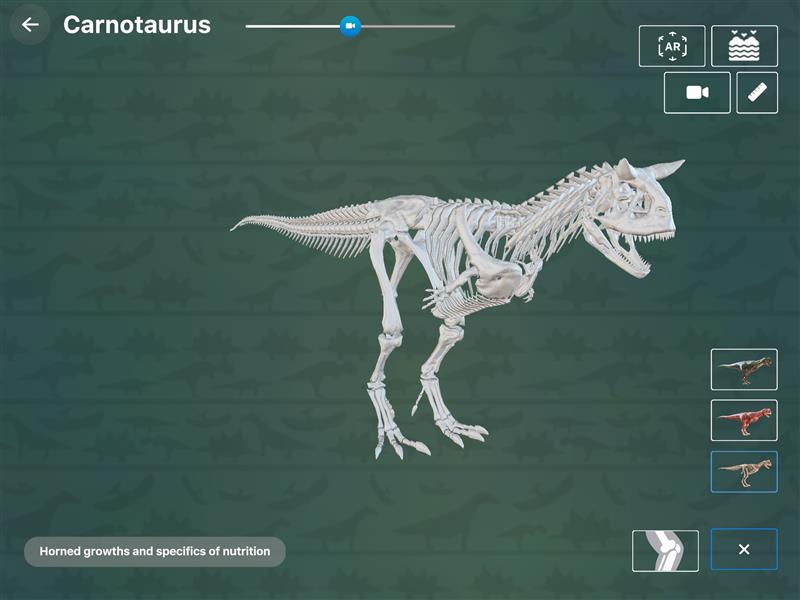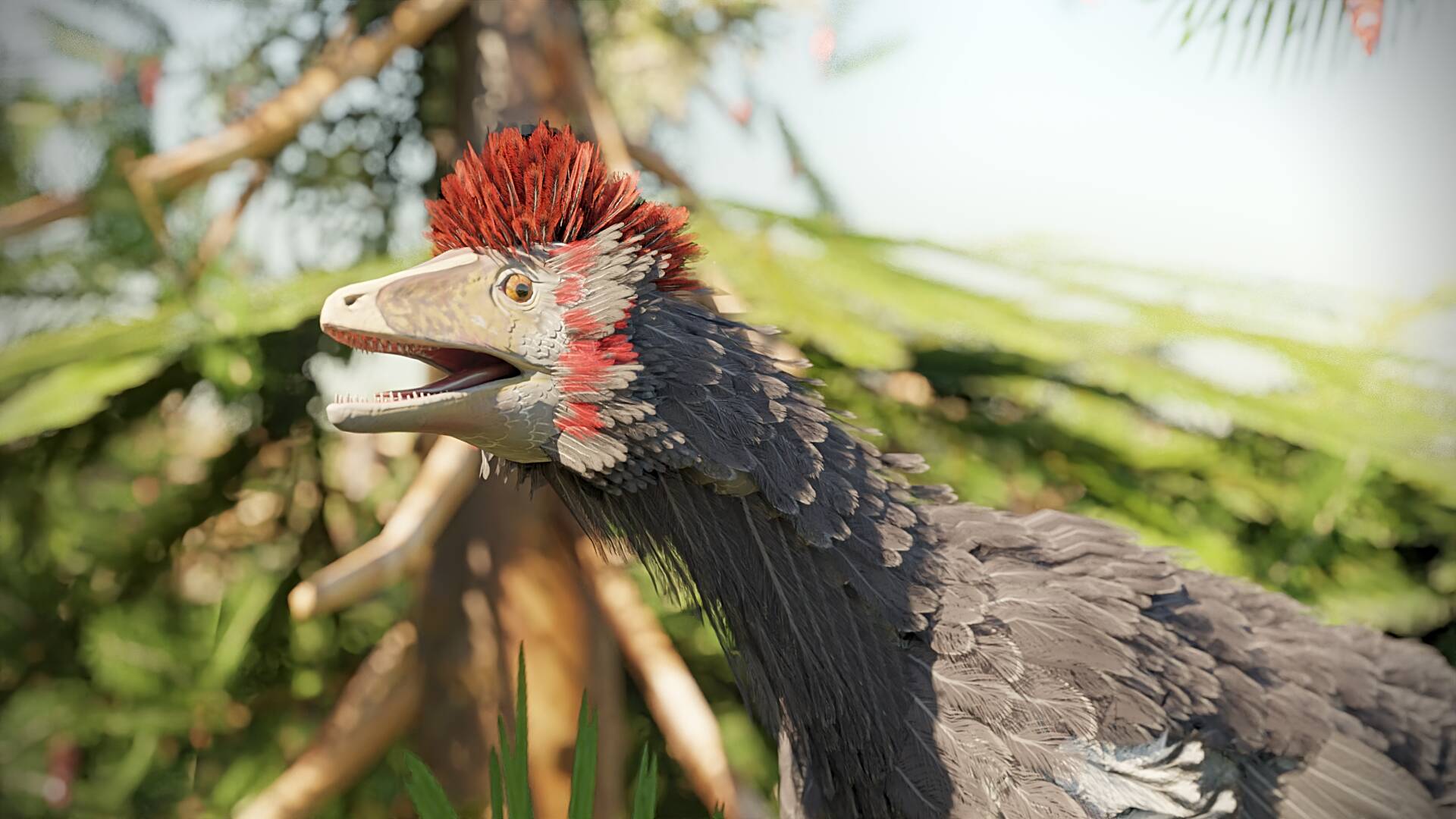Andrewsarchus

Name meaning:
Andrews’ ruler
Period of life:
48-46 mya
Period:
Habitat:
Lakes and marshes
Taxonomy:
Mammals
Countries:

Andrewsarchus is a huge mammalian predator inhabited Mongolia, China and Central Asia during the middle and late Eocene epoch about 45-36 million years ago. In 1923 Roy Chapman Andrews expedition recovered the animal remains at Irdin Manha Formation. The animal was named after the expedition leader additionally attaining the meaning “commander”.
The Andrewsarchus had an impressive body size from the snout to 1.5 metres tail tip varying from 3.8 to 6 metres. The gigantic skull was 56 centimetres in width and 83 centimetres in length. Brain size, however, was surprisingly small. It had large canines and incisors but flat molar teeth. Andrewsarchus weighed about 1 ton. It probably was the largest mammalian predator ever lived on Earth.
Despite the fact that it related to omnivorous species Andrewsarchus did not normally prey large animals and preferred juvenile specimen and carrion. It is quite likely that the animal was not purely terrestrial also bearing amphibian features. . The following Andrewsarchus traits allowed the scientists to make such conclusions. The crocodile-like skull and the bite force capable of turtle shell crushing enabled the amphibian lifestyle theory.
Discussions
Other animals
 INTERESTING FACTS
INTERESTING FACTS
 PUZZLES
PUZZLES
 HOME
HOME
 3D MODEL "SKIN"
3D MODEL "SKIN"
 3D MODEL "MUSCLES"
3D MODEL "MUSCLES"
 3D MODEL "SKELETON"
3D MODEL "SKELETON"
 VISION
VISION
 NEIGHBORS
NEIGHBORS
 VOICE ACTING
VOICE ACTING
 AR - MODE
AR - MODE
 GALLERY
GALLERY
 HISTORY OF DISCOVERIES
HISTORY OF DISCOVERIES
